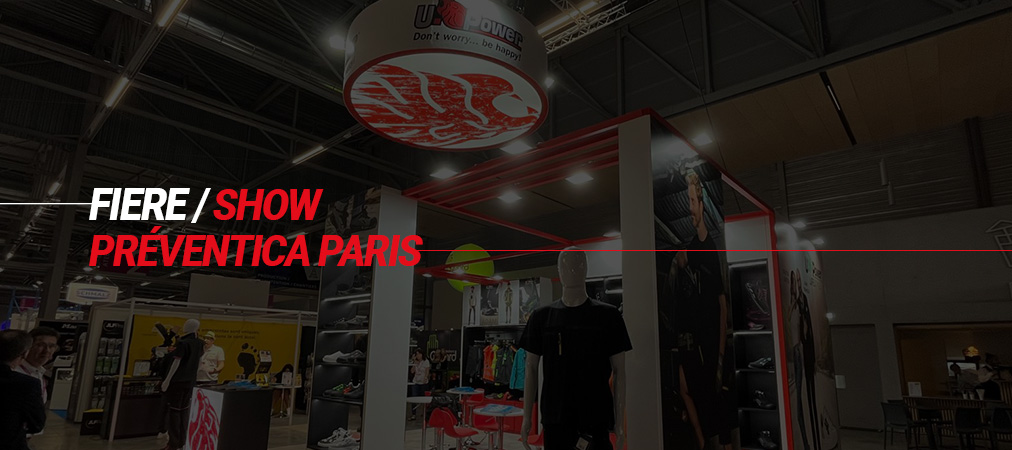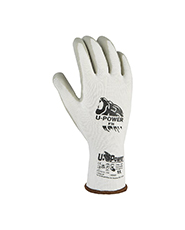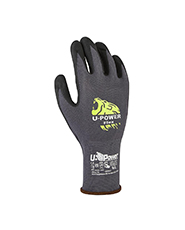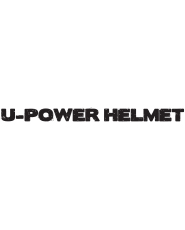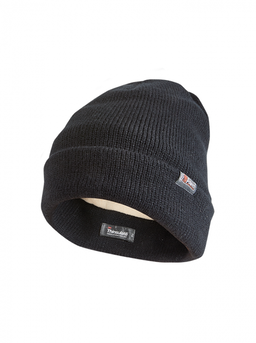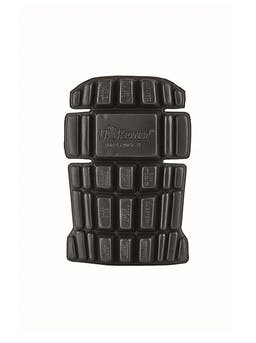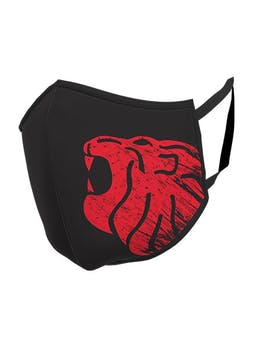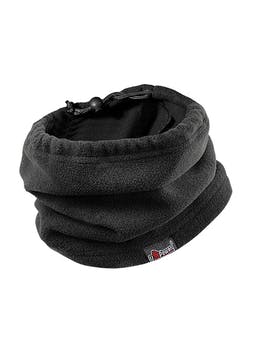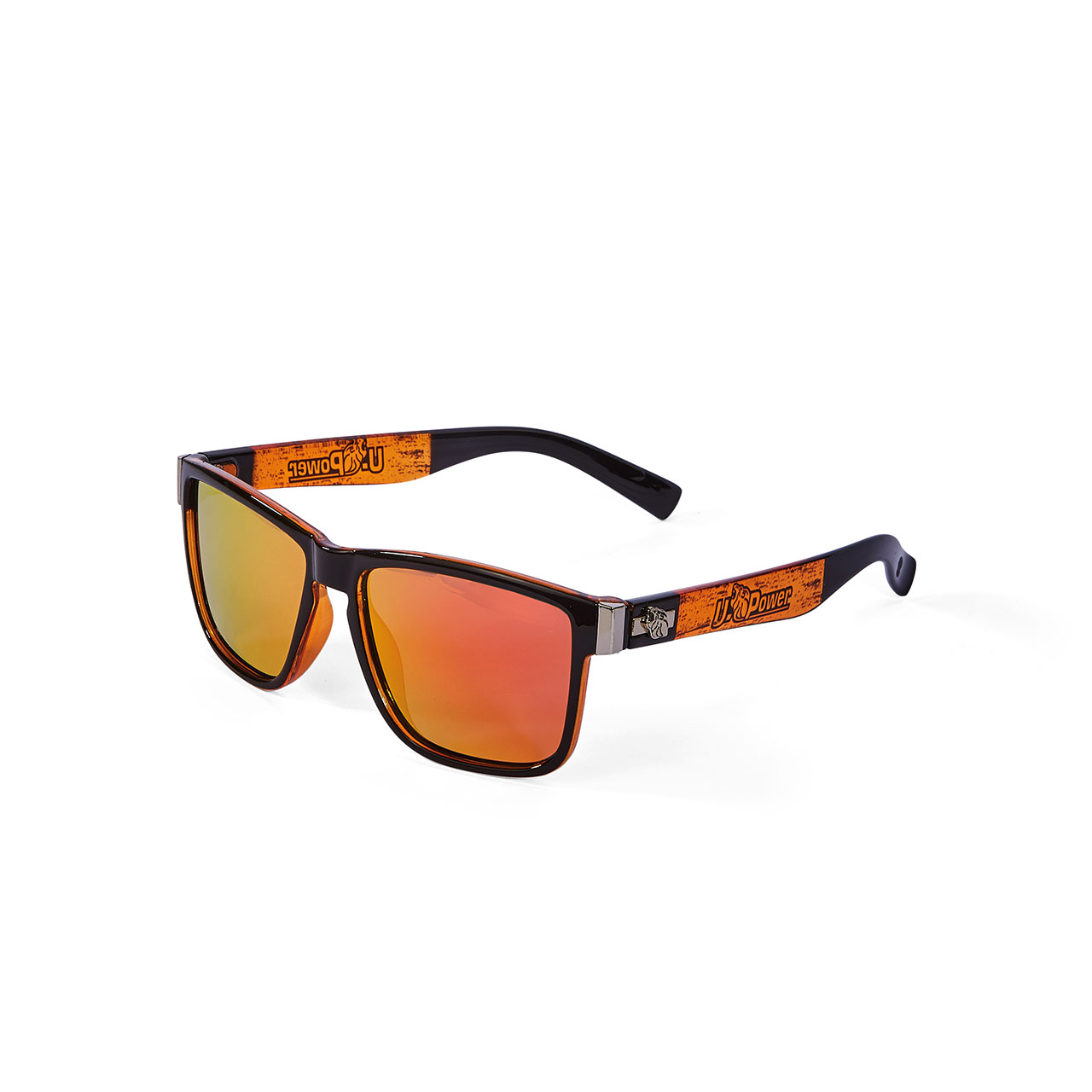EUROPEAN STANDARDS FOR HAND PROTECTION - PROTECTIVE GLOVES: GENERAL REQUIREMENTS
EN 21420 General requirements and test methods - Protective gloves
Protection for: light and superficial mechanical work, handling of thinly diluted detergent solutions, handling of small components that are slightly hot (max 50°C), winter outdoor activity with medium temperatures (max 0°C).
EN 420 2003 + A1:2009
This standard defines the requirements for gloves in terms of design, construction, cleaning, instructions, electrostatic properties, sizing, dexterity, water vapor transmission and absorption with markings and information.

PROTECTIVE GLOVES AGAINST MECHANICAL RISKS - EN 388
In recent years, changes in the manufacturing process of protective gloves have meant that the well-proven method of hand protection testing (EN388:2003), and in particular the test to evaluate cut protection, is no longer suitable. While the old EN388:2003 system with the 1 to 5 numbering system was easily understood, the development of new cut resistant materials combined with a push from industry to provide the highest level of protection possible has made it necessary to review the method for test hand protection.
EN388:2016+A1:2018 requires updating the standard and, in doing so, 2 tests have been revised (abrasion and cut) and 2 new tests have been included (TDM cut resistance and impact resistance). The EN388:2003 standards specify physical and mechanical aggression caused by abrasion, blade cutting, tearing and puncturing. EN388:2016+A1:2018 updates the existing standard with this new test method for abrasion, TDM shear and impact resistance. EN ISO 13997:1999 (TDM test) records cut results as a Newton value - the force of the blade on the glove material required to cut 20mm material. Results are represented on an A-F scale.
| EN 388 - PERFORMANCE LEVEL | 1 | 2 | 3 | 4 | 5 | ||||||
|---|---|---|---|---|---|---|---|---|---|---|---|
A | Abrasion resistance (number of cycles) | 100 | 500 | 2000 | 8000 | - | |||||
B | Blade cut resistance (index) Impact test method | 1,2 | 2,5 | 5,0 | 10,0 | 20,0 | |||||
C | Tear resistance (N) | 10 | 25 | 50 | 75 | - | |||||
D | Puncture resistance (N) | 20 | 60 | 100 | 150 | - | |||||
| EN ISO 13997:1999 TDM - PERFORMANCE LEVEL | A | B | C | D | E | F | |||||||
|---|---|---|---|---|---|---|---|---|---|---|---|---|---|
E | TDM cut resistance test levels (N) | 2 | 5 | 10 | 15 | 22 | 30 | ||||||
F | Protection at impact | Past (P) or not past (unmarked) | |||||||||||

EN 388 - REQUIREMENTS
PERFORMANCE LEVEL P P
Resistance at impact5J impact resistance properties
PERFORMANCE LEVEL P A-F
TDM shear resistance(TDM shear test) Measure the average load to obtain the shear moment
PERFORMANCE LEVEL P 1-4
d: RESISTANCE TO PUNCTUREForce required to pierce the specimen with a standard nail
PERFORMANCE LEVEL P 1-4
c: TEAR RESISTANCEMaximum force needed to tear the sample
PERFORMANCE LEVEL P 1-5
b: RESISTANCE TO BLADE CUT: (cut test)Number of cycles needed to cut the sample at constant speed
PERFORMANCE LEVEL P 1-4
a: ABRASION RESISTANCENumbers of cycles required to damage the sample at a constant rate

PROTECTIVE GLOVES AGAINST THERMAL RISKS (Heat and/or fire) EN 407:2004 and EN 407:2020
This standard specifies the degree of performance of gloves against heat and fire. The pictogram uses 6 numbers:
| PERFORMANCE LEVEL | 1 | 2 | 3 | 4 | |||||
|---|---|---|---|---|---|---|---|---|---|
| TEST | |||||||||
Behaviour at combustion | Time after flame (seconds) | ≤ 20 | 10 | 3 | 2 | ||||
| Time after glow (seconds) | No requirements | 10 | 3 | 2 | |||||
Heat of contact | Contact temperature Tc (°C) | 100 | 250 | 350 | 500 | ||||
| Threshold time tt (seconds) | ≥ 15 | ≥ 15 | ≥ 15 | ≥ 15 | |||||
Convective heat index | HTI heat transfer index (seconds) | ≥ 4 | ≥ 7 | ≥ 10 | ≥ 18 | ||||
Small splashes of molten metal | Number of drops | ≥ 10 | ≥ 15 | ≥ 25 | ≥ 35 | ||||
Large splashes of molten metal | Molten iron (g) | 30 | 60 | 120 | 200 | ||||

EN 407:2020 - REQUIREMENTS
PERFORMANCE LEVEL P P
f: RESISTANCE TO LARGE SPATTER OF MOLTEN METALAmount of molten material required to bring the glove up to a certain temperature
PERFORMANCE LEVEL P A-F
e: RESISTANCE TO SMALL SPATTER OF MOLTEN METALAmount of molten metal splashes required to bring the glove up to a certain temperature
PERFORMANCE LEVEL P 1-4
d: RESISTANCE TO RADIANT HEATTime needed to reach a certain temperature level
PERFORMANCE LEVEL P 1-4
c: CONVECTIVE HEAT RESISTANCETime during which the glove is able to delay the heat transfer of a flame
PERFORMANCE LEVEL P 1-5
b: RESISTANCE TO CONTACT WITH HEAT FOR 15 SECONDSTemperature (in a range between 100°C and 500°C) at which the user of the gloves does not feel pain (for a period of at least 15 seconds)
PERFORMANCE LEVEL P 1-4
a: LIMITED FLAME PROPAGATION RESISTANCETime during which the material remains on and continues to burn after the ignition source has been removed
| B: RESISTANCE TO CONTACT WITH HEAT FOR 15 SECONDS | ||
|---|---|---|
| PERFORMANCE LEVEL | CONTACT TEMPERATURE | THRESHOLD TIME |
| 1 | 100°C | ≥15s |
| 2 | 100°C | ≥15s |
| 3 | 100°C | ≥15s |
| 4 | 100°C | ≥15s |

EN 16350:2014 Protective gloves: electrostatic properties
This European standard specifies a test method for properties electrostatics of the gloves. The test improves on EN1149 by requiring a vertical resistance of less than 1.0x108 ohm. Gloves tested to EN16350:2014 can be used in areas where there may be an increased risk of explosion, such as in a refinery.

CE Foodsafe (MOCA)
The Framework Regulation (EC) 1935/2004 provides that materials or objects intended to come into contact with food must not:
- constitute a danger to human health;
- lead to an unacceptable change in the composition of food products;
- lead to a deterioration of their organoleptic characteristics.
All these materials or objects must be marked with the specific symbol which certifies their suitability for contact with food.

IEC 61340-5-1:2016
Protection of electronic devices from electrostatic phenomena:
general requirements
Questa norma europea specifica un metodo di prova per le proprietà elettrostatiche dei guanti. Il test migliora la EN1149 in quanto richiede una resistenza verticale inferiore a 1,0x108 ohm. I guanti testati secondo la norma EN16350:2014 possono essere utilizzati in aree in cui potrebbe esserci un maggiore rischio di esplosione, come in una raffineria.
EN 511:206 Anti-cold gloves
The European standard specifies the requirements and test methods for gloves that protect from cold up to -50°C. This type of cold can be due to climatic conditions or industrial activity. REQUIREMENTS:
PERFORMANCE LEVEL P 0-1
c: WATER PENETRATIONPERFORMANCE LEVEL P 1-4
b: RESISTANCE TO CONTACT COLDPERFORMANCE LEVEL P 1-4
a: RESISTANCE TO CONVECTIVE COLDPer more information: info@u-power.it


























































